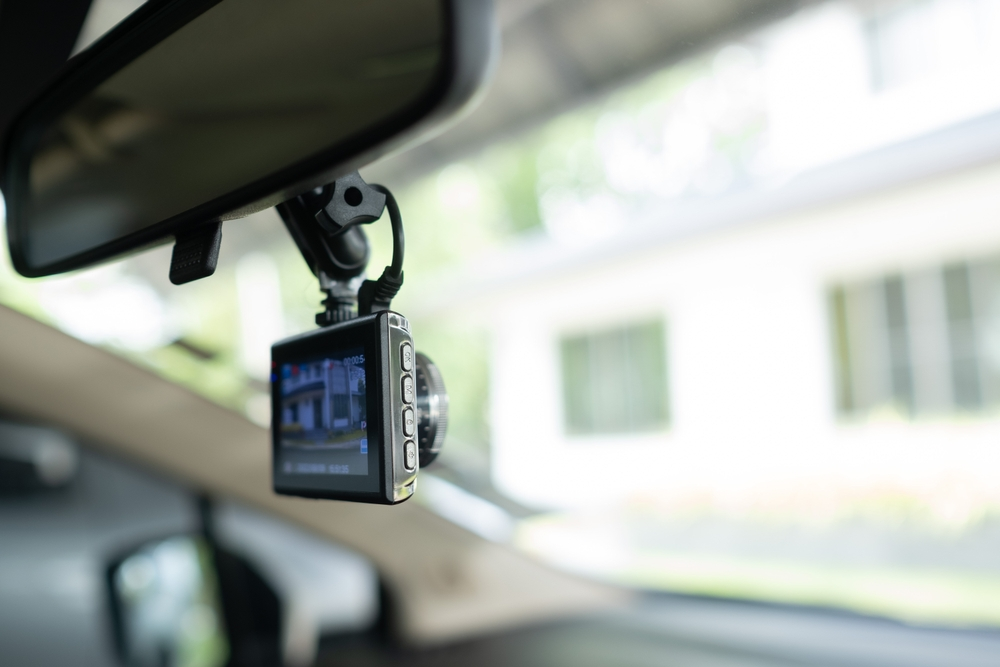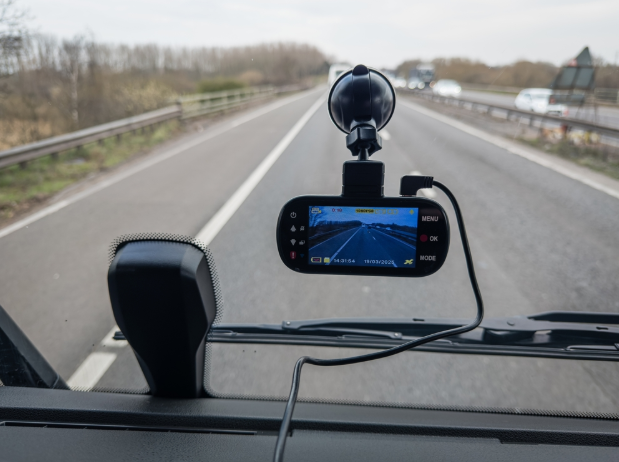Traditional fleet dash cams record what happens on the road. They capture collisions, document traffic conditions, and protect drivers from false claims. But in 2026, that’s the baseline. Modern fleet camera systems go far beyond simple video capture, as they combine AI, GPS with video telematics, and cloud-based analytics to deliver real operational insight.
For fleets that manage hundreds of vehicles, a basic dash cam setup no longer provides enough context or control. True fleet camera systems merge live video with location data, driver behavior analysis, and maintenance intelligence.
Here’s what it means when a fleet camera system truly goes beyond a dash cam, and how to recognize the difference.
1. From recording to understanding
A dash cam records; a fleet camera system interprets. Modern systems analyze what’s captured on camera alongside telematics data like speed, braking, and GPS position. This link transforms video into actionable insight.
Instead of manually reviewing hours of footage, managers can receive clips automatically flagged for risky behavior, harsh braking, or speeding. That means safety and operations teams can focus on verified events that matter.
For instance, Track Star’s approach to video telematics merges this context into a single timeline. Each video clip syncs with GPS routes, sensor data, and vehicle diagnostics, giving fleets a complete picture of both what happened and why.
2. Integrated GPS with video telematics
One of the key differences between a dash cam and a full truck camera system is its integration with GPS tracking. Video without data is just a recording; GPS without video is an incomplete story. Combining both creates visibility that extends across the entire operation.
With GPS-enabled video telematics, managers can review footage tied to exact routes, timestamps, and locations. This makes it easier to verify incidents, review delivery timelines, and confirm driver accountability. It also helps spot patterns that affect efficiency, like routes that consistently cause delays or vehicles that idle longer than expected.
Fleet systems that merge GPS with video telematics often deliver measurable savings in fuel, insurance, and downtime. McKinsey research shows fleets using integrated telematics solutions can reduce operational costs by 10 to 15 percent annually through faster decision-making and fewer unverified claims.
3. AI-driven driver analysis
Another defining feature of advanced fleet camera systems is artificial intelligence. Instead of relying on manual review, AI automatically detects unsafe driving behavior, such as following too closely, phone use, or distracted driving.
These insights help safety teams prioritize coaching and reduce accident rates over time.
When camera data connects to driver IDs and performance profiles, it becomes a fair, consistent feedback loop. Systems like Track Star use these insights to power Driver Scorecards and training workflows, helping managers focus on prevention rather than reaction.
4. Cloud storage and remote access
Traditional dash cams store footage locally, which can be lost, overwritten, or hard to retrieve. Fleet camera systems address this with secure cloud storage, ensuring footage is accessible on demand.
This matters in real-world scenarios like insurance disputes, customer complaints, or safety audits. Instead of waiting for a physical device, teams can instantly access clips by vehicle, date, or event type.
Cloud-connected systems also make collaboration easier. Safety managers, dispatchers, and maintenance teams can all view relevant footage from the same platform. With Track Star, these clips are automatically linked to asset history, maintenance records, and trip logs, eliminating silos and manual work.

5. Multi-angle and in-cab coverage
Fleet dash cams typically focus on the road ahead. But full truck camera systems expand coverage to include the cabin, side views, and cargo areas. This level of visibility supports more than safety, as it strengthens accountability and compliance.
Cab-facing cameras provide valuable context in the event of an incident. Side and rear cameras help with blind spots and docking maneuvers. Together, they reduce liability and improve efficiency for commercial and municipal fleets alike.
Fleet managers can also configure these camera setups by vehicle type. For instance, utility trucks may require side-mount or 360-degree cameras for job-site verification, while delivery fleets might prioritize rear cameras for loading zone safety.
6. Proactive maintenance insights
Fleet camera systems that go beyond dash cams not only focus on driver safety, but they also enhance maintenance and uptime. By connecting video data with telematics, managers can identify recurring issues like harsh braking, aggressive acceleration, or overuse of certain routes.
This data feeds into preventive maintenance schedules, helping reduce wear and tear. Systems like Track Star integrate this directly with vehicle diagnostics and maintenance modules, automatically generating service alerts based on driver behavior and usage patterns.
That connection between video evidence and vehicle health supports smarter decisions, helping fleets balance safety with operational efficiency.
7. Compliance and data governance
As fleets handle more video data, compliance and privacy become critical. Government, municipal, and enterprise fleets are subject to strict data retention and security standards. Modern fleet camera systems are built with these requirements in mind, using encryption, access control, and storage.
Track Star’s experience with public sector clients means its platform is designed for those same standards. Every clip, log, and data point is encrypted in transit and at rest, ensuring data integrity for regulated operations.
Fleet leaders evaluating systems in 2026 should always ask how footage is stored, who can access it, and how long it’s retained. These questions go beyond technology, as they define whether a system can stand up to real compliance audits.
Final thoughts
Modern fleet camera systems redefine how fleets manage safety, maintenance, and accountability. They combine fleet dash cams, GPS with video telematics, and cloud-based analytics to create a unified view of fleet performance.
For organizations in government, utilities, and transportation, platforms like Track Star deliver all these elements under one roof: flexible, compliant, and proven to scale with complex operations.
If your fleet still relies on standalone dash cams, it’s time to upgrade to an integrated system that captures the full picture. Schedule a call with Track Star and learn more today!
Frequently asked questions
1. How do fleet camera systems help reduce false claims?
Fleet camera systems provide verified video and GPS data for every incident, helping fleets quickly prove fault, lower liability, and prevent unnecessary insurance payouts.
2. Can fleet camera systems connect to existing GPS platforms?
Yes. Most fleet camera systems integrate with GPS tracking and video telematics tools, allowing managers to see location, footage, and driver data in one dashboard.
3. Can fleet camera systems detect fatigued driving automatically?
Yes. AI-powered camera systems analyze driver facial movements, head position, and eye activity to identify distraction or fatigue. This enables instant alerts and proactive coaching that prevent costly incidents before they occur.
4. What’s the real ROI of upgrading to full fleet camera systems?
Upgrading to an integrated fleet camera system reduces false insurance claims, shortens investigation time, and helps coach drivers more effectively. Many fleets see measurable safety and cost improvements within six to twelve months.
5. How secure is the data collected by truck camera systems?
Reputable fleet camera systems like Track Star encrypt footage in transit and during storage. Access is role-based and logged, ensuring that only authorized team members can view sensitive video or driver data.


